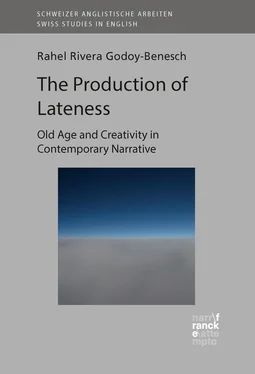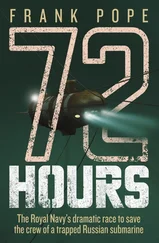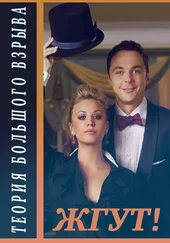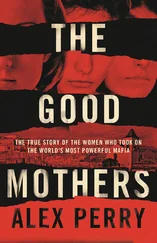Rahel Rivera Godoy-Benesch - The Production of Lateness
Здесь есть возможность читать онлайн «Rahel Rivera Godoy-Benesch - The Production of Lateness» — ознакомительный отрывок электронной книги совершенно бесплатно, а после прочтения отрывка купить полную версию. В некоторых случаях можно слушать аудио, скачать через торрент в формате fb2 и присутствует краткое содержание. Жанр: unrecognised, на английском языке. Описание произведения, (предисловие) а так же отзывы посетителей доступны на портале библиотеки ЛибКат.
- Название:The Production of Lateness
- Автор:
- Жанр:
- Год:неизвестен
- ISBN:нет данных
- Рейтинг книги:5 / 5. Голосов: 1
-
Избранное:Добавить в избранное
- Отзывы:
-
Ваша оценка:
- 100
- 1
- 2
- 3
- 4
- 5
The Production of Lateness: краткое содержание, описание и аннотация
Предлагаем к чтению аннотацию, описание, краткое содержание или предисловие (зависит от того, что написал сам автор книги «The Production of Lateness»). Если вы не нашли необходимую информацию о книге — напишите в комментариях, мы постараемся отыскать её.
The Production of Lateness — читать онлайн ознакомительный отрывок
Ниже представлен текст книги, разбитый по страницам. Система сохранения места последней прочитанной страницы, позволяет с удобством читать онлайн бесплатно книгу «The Production of Lateness», без необходимости каждый раз заново искать на чём Вы остановились. Поставьте закладку, и сможете в любой момент перейти на страницу, на которой закончили чтение.
Интервал:
Закладка:
When reading Mann’s passage alongside Adorno’s “Late Style” essay, what stands out clearly is that Adorno’s late-style project was in fact a way to legitimize his prioritization of a type of art that is enigmatic, fractured, and contradictory,13 and Adorno extended his focus to the artistic attitude attached to it. Obviously, the musical avant-gardeavant-garde of modernism with Alban BergBerg, Alban and Arnold SchoenbergSchoenberg, Arnold would provide such art, and it is equally obvious that Adorno was elitist in his assumption that no easily understood musical piece was truly artistic.14 Keeping this in mind, and trying to understand the intrusive appearance of the late artist in Adorno’s professedly non-biographic approach, one will find an explanation in Said’sSaid, Edward comments:
I think it is right […] to see Adorno’s extremely intense lifelong fixation on third-period Beethoven as the carefully maintained choice of a critical model, a construction made for the benefit of his own actuality as a philosopher and cultural critic in an enforced exile from the society that made him possible in the first place. To be late meant therefore to be late for (and refuse) many of the rewards offered up by being comfortable inside society, not the least of which was to be read and understood easily by a large group of people. (21–22)
According to Said, Adorno thus used the late Beethoven to justify his own difficult, non-compliant philosophicalphilosophy attitude: by way of his admiration of the ageing composer, he himself turned into a ‘late artist’ though he was still young.15 In this context, one of Ben Hutchinson’sHutchinson, Ben comments is illuminating, although it is made in a slightly different context: he writes that Adorno “wants to preserve the particularity of Spätstil [i.e. late stylelate style] […] from its creeping association with Altersstil [i.e. old-age styleold-age style]” ( Lateness 258). In order to make his late-style theory compatible with his own, ‘young’ lateness, he must rid late works of “the proximity of deathdeath that is traditionally ascribed to [them] – and that is generally held to lend them their pathos” ( Lateness 258–259).
The way in which Adorno fashioned his writerly stance after what he believed to be Beethoven’s own attitude has remained a model for subsequent authors and artists who strive for the enticing characteristics that the late artist figure encompasses: eccentricity, agency, liberty and fame. More than the theoretical essence of Adorno’s famous 1937 essay, it was the vivid imagery of its language that encouraged this trend. Moreover, Thomas Mann’sMann, Thomas novel played an important role. As Hinrichsen explains, it was the publication of Doctor Faustus in 1947 that caused the reprinting of “Late Style in Beethoven” and made Adorno’s essay popular again (226). It thus seems plausible that readers who were familiar with Doctor Faustus would perceive Adorno’s references to the late artist in “Late Style” with even more clarity and thus favor an artist-centered reading over one that considered merely the formal aspects of Beethoven’s late work. The contemporary late artist had been born.
2.4 Expanding Latenesslateness in Literature: Late Stylelate style as a Code of Production
Among the authors who have fashioned themselves as late artists are, most prominently, ageing postmodernistpostmodernism writers: those who have always worked within the metafictionalmetafiction terrain, exploring and pushing the boundaries of literature. Mark CurrieCurrie, Mark describes metafiction as “a kind of writing which places itself on the border between fiction and criticism, and which takes that border as its subject” (Introduction 2). Hence, metafictional writers have evidently not remained oblivious to the scholarly discussion on late style. In Late Style and Its Discontents , McMullanMcMullan, Gordon and SmilesSmiles, Sam declare that their collection of essays is “designed as a provocation, as encouragement to art historiansart history, literary critics, and musicologists alike to reflect on received ideas about creativity at the end of life” (Introduction 2). Looking at the current literary landscape, one can confidently state that postmodernpostmodernism authors have been addressing precisely this challenge for some decades now. They have not only been enacting aspects of late style and thus provided critics with new material to analyze, but also reflected on the late-style debate, pushing it further. Patricia WaughWaugh, Patricia calls metafictional writers the “contemporary avant-gardeavant-garde” (10), and Sandro ZanettiZanetti, Sandro titles his extensive late-style study Avantgardismus der Greise (“avant-gardism of the aged”), hinting that late art displays just such an avant-garde spirit. In doing so, late works have created a site of discourse that runs parallel to the scholarly late-style debate. Considering such literary late-style treatments in conjunction with theoretical texts should therefore produce intriguing results. In the same way as Thomas Mann’sMann, Thomas passage from Doctor Faustus communicates with Theodor W. Adorno’sAdorno, Theodor W. essay “Late Style in Beethoven,” one could argue, fictional and theoretical contemporary treatments of late style interact in a mutually prolific manner.1 Although Mann’s text was, strictly speaking, fashioned after Adorno’s essay – in both its temporal and conceptual sense – its literary means act independently, producing meanings of their own. These meanings, when projected back onto the theoretical source text by Adorno, further illuminate the theoretical content of Adorno’s essay. In a similar manner, literary works that circle around late style may enlighten the scholarly late-style debate, from which they originally arose.
This is not the only manner, however, in which contemporary works that exhibit late style may be approached. McMullanMcMullan, Gordon and SmilesSmiles, Sam have raised the question as to how one can counteract the “discontents” of the late-style debate, assess late style in a more satisfactory manner and thus “find new, more reflexive, more critically and theoretically nuanced and rigorous ways to account for the creative possibilities associated with the end of the artistic life” (Introduction 12). This question will be addressed and three different ways will be proposed in which the reading of late-style narrativeslate-style narrative can be made productive for the late-style debate without the need to resort to simplifying binary oppositions or to lapse into otherwise problematic universalistuniversal late style and individualist approaches.
At this stage, it must be emphasized that contemporary authors use late style in a complex manner and employ different levels of literary communicationcommunication. Their texts do not exhibit Adorno’s late-style characteristics such as the fragmentariness of the artwork and the dissociation between subjectivitysubjectivity and conventionconvention. Rather, they are influenced by the image of the late artist and guided by the belief that lateness is an indicator of artistic accomplishment. However, even if we notice such similarities between the individual works, this cannot – and should not – result in a universalist approach, since the way in which authors implement late style is highly individualized. What McMullanMcMullan, Gordon and SmilesSmiles, Sam suggest is all too true: “Late style […] is a process still made more complex as creative artists become more and more versed in ideas of lateness” (Introduction 6). It would thus be disproportionate (and all too reductive) to simply read Adorno’sAdorno, Theodor W. characteristics into a contemporary late work.2 However, late style cannot be considered simply an invention of the critics either, since the late-style narrative explicitly refers to lateness and thus includes late-style concepts in the literary text. In view of these implications, late style will here be approached as a code of production , that is, a means of communication that is consciously and purposefully used by the authorial figure. Yet, late style is also a code of production with regard to the reading process; it is thus an essential meaning-making tool within the text. This presupposes a common ground of understanding between the authors and their audience, which may be one of the core reasons why authors resort to the late-style narrativelate-style narrative. With its semi-biographical artist-protagonists, its mise-en-abîme mise-en-abîme, and its metafictionalmetafiction mode, it is a particularly convenient medium: it can deliver its own theory alongside its narrative content, providing its readers with the necessary theoretical basis.
Читать дальшеИнтервал:
Закладка:
Похожие книги на «The Production of Lateness»
Представляем Вашему вниманию похожие книги на «The Production of Lateness» списком для выбора. Мы отобрали схожую по названию и смыслу литературу в надежде предоставить читателям больше вариантов отыскать новые, интересные, ещё непрочитанные произведения.
Обсуждение, отзывы о книге «The Production of Lateness» и просто собственные мнения читателей. Оставьте ваши комментарии, напишите, что Вы думаете о произведении, его смысле или главных героях. Укажите что конкретно понравилось, а что нет, и почему Вы так считаете.












